Ryobi R18CHS20 Handleiding
Ryobi
Zaagmachine
R18CHS20
Bekijk gratis de handleiding van Ryobi R18CHS20 (20 pagina’s), behorend tot de categorie Zaagmachine. Deze gids werd als nuttig beoordeeld door 63 mensen en kreeg gemiddeld 4.3 sterren uit 32 reviews. Heb je een vraag over Ryobi R18CHS20 of wil je andere gebruikers van dit product iets vragen? Stel een vraag
Pagina 1/20

FRONT PAGE
R18CHS20

2
Original Instructions
IMPORTANT!
It is essential that you read the instructions in this manual
before assembling, operating, and maintaining the
product.
Subject to technical modication.
Safety, performance, and dependability have been given top
priority in the design of your cordless chainsaw.
INTENDED USE
The cordless chainsaw is intended for outdoor use only. For
safety reasons, the product must be adequately controlled
by using a two-handed operation at all times.
The product is designed for cutting branches, trunks, logs,
and beams of a diameter determined by the cutting length of
the guide bar. It is designed to cut wood only.
The product is to be used in domestic applications only by
adults who have received adequate training on the hazards
and preventative measures to be taken while using the
product. It should not be used for professional tree services.
Do not use the product for any other purpose.
GENERAL PRODUCT SAFETY WARNINGS
WARNING! Read all safety warnings, instructions,
illustrations and specifications provided with this
power tool. Failure to follow all instructions listed below
may result in electric shock, re, and/or serious injury.
Save all warnings and instructions for future reference.
The term “power tool” in the warnings refers to your mains-
operated (corded) product or battery-operated (cordless)
product.
WORK AREA SAFETY
■ Keep work area clean and well lit. Cluttered or dark
areas invite accidents.
■ Do not operate power tools in explosive
atmospheres, such as in the presence of flammable
liquids, gases or dust. Power tools create sparks
which may ignite the dust or fumes.
■ Keep children and bystanders away while operating
a power tool. Distractions can cause you to lose control.
ELECTRICAL SAFETY
■ Power tool plugs must match the outlet. Never
modify the plug in any way. Do not use any adapter
plugs with earthed (grounded) power tools.
Unmodified plugs and matching outlets will reduce risk
of electric shock.
■ Avoid body contact with earthed or grounded
surfaces, such as pipes, radiators, ranges and
refrigerators. There is an increased risk of electric
shock if your body is earthed or grounded.
■ Do not expose power tools to rain or wet conditions.
Water entering a power tool will increase the risk of
electric shock.
■ Do not abuse the cord. Never use the cord for
carrying, pulling or unplugging the power tool. Keep
cord away from heat, oil, sharp edges or moving
parts. Damaged or entangled cords increase the risk of
electric shock.
■ When operating a power tool outdoors, use an
extension cord suitable for outdoor use. Use of a
cord suitable for outdoor use reduces the risk of electric
shock.
■ If operating a power tool in a damp location is
unavoidable, use a residual current device (RCD)
protected supply. Use of an RCD reduces the risk of
electric shock.
PERSONAL SAFETY
■ Stay alert, watch what you are doing and use
common sense when operating a power tool. Do not
use a power tool while you are tired or under the
influence of drugs, alcohol or medication. A moment
of inattention while operating power tools may result in
serious personal injury.
■ Use personal protective equipment. Always wear
eye protection. Protective equipment such as a dust
mask, non-skid safety shoes, hard hat or hearing
protection used for appropriate conditions will reduce
personal injuries.
■ Prevent unintentional starting. Ensure the switch
is in the off-position before connecting to power
source and/or battery pack, picking up or carrying
the tool. Carrying power tools with your finger on the
switch or energising power tools that have the switch on
invites accidents.
■ Remove any adjusting key or wrench before turning
the power tool on. A wrench or a key left attached to
a rotating part of the power tool may result in personal
injury.
■ Do not overreach. Keep proper footing and balance
at all times. This enables better control of the power tool
in unexpected situations.
■ Dress properly. Do not wear loose clothing or
jewellery. Keep your hair and clothing away from
moving parts. Loose clothes, jewellery or long hair can
be caught in moving parts.
■ If devices are provided for the connection of dust
extraction and collection facilities, ensure these are
connected and properly used. Use of dust collection
can reduce dust-related hazards.
■ Do not let familiarity gained from frequent use of
tools allow you to become complacent and ignore
tool safety principles. A careless action can cause
severe injury within a fraction of a second.
POWER TOOL USE AND CARE
■ Do not force the power tool. Use the correct power
tool for your application. The correct power tool will
do the job better and safer at the rate for which it was
designed.
■ Do not use the power tool if the switch does not turn
it on and off. Any power tool that cannot be controlled
with switch is dangerous and must be repaired.
■ Disconnect the plug from the power source and/
or remove the battery pack, if detachable, from
the power tool before making any adjustments,
changing accessories, or storing power tools. Such
preventive safety measures reduce the risk of starting
the power tool accidentally.
■ Store idle power tools out of the reach of children
and do not allow persons unfamiliar with the power
tool or these instructions to operate the power tool.
Product specificaties
| Merk: | Ryobi |
| Categorie: | Zaagmachine |
| Model: | R18CHS20 |
Heb je hulp nodig?
Als je hulp nodig hebt met Ryobi R18CHS20 stel dan hieronder een vraag en andere gebruikers zullen je antwoorden
Handleiding Zaagmachine Ryobi
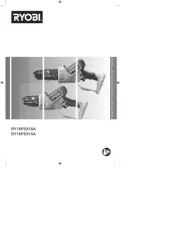
5 Juli 2025
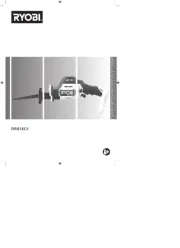
30 Juni 2025
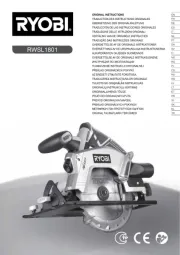
17 Mei 2025
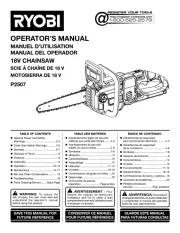
7 April 2025
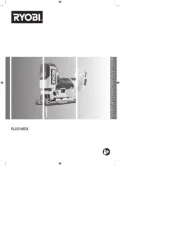
11 Februari 2025
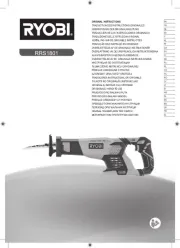
15 November 2024

11 September 2024

11 September 2024

23 Augustus 2024

23 Augustus 2024
Handleiding Zaagmachine
- Shindaiwa
- Powerfix
- Bebe Confort
- Fuxtec
- Max
- Qualcast
- Global
- Prowork
- BGU
- Donau Elektronik
- Erbauer
- Huvema
- Graphite
- Maxbear
- Craftsman
Nieuwste handleidingen voor Zaagmachine
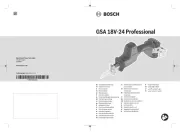
15 September 2025
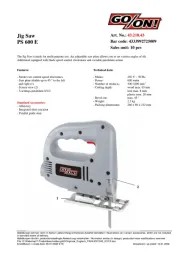
7 September 2025
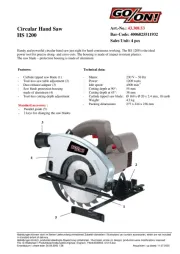
7 September 2025
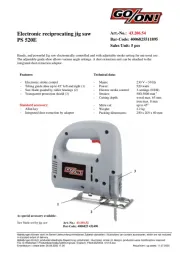
7 September 2025
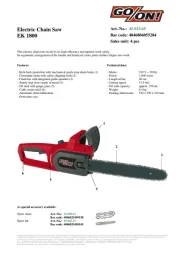
7 September 2025
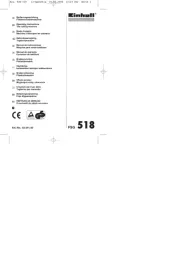
2 September 2025
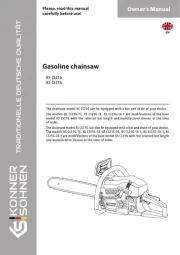
2 September 2025
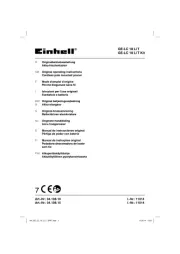
2 September 2025
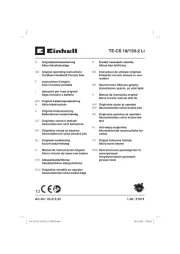
2 September 2025
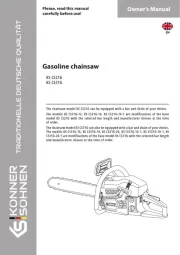
2 September 2025